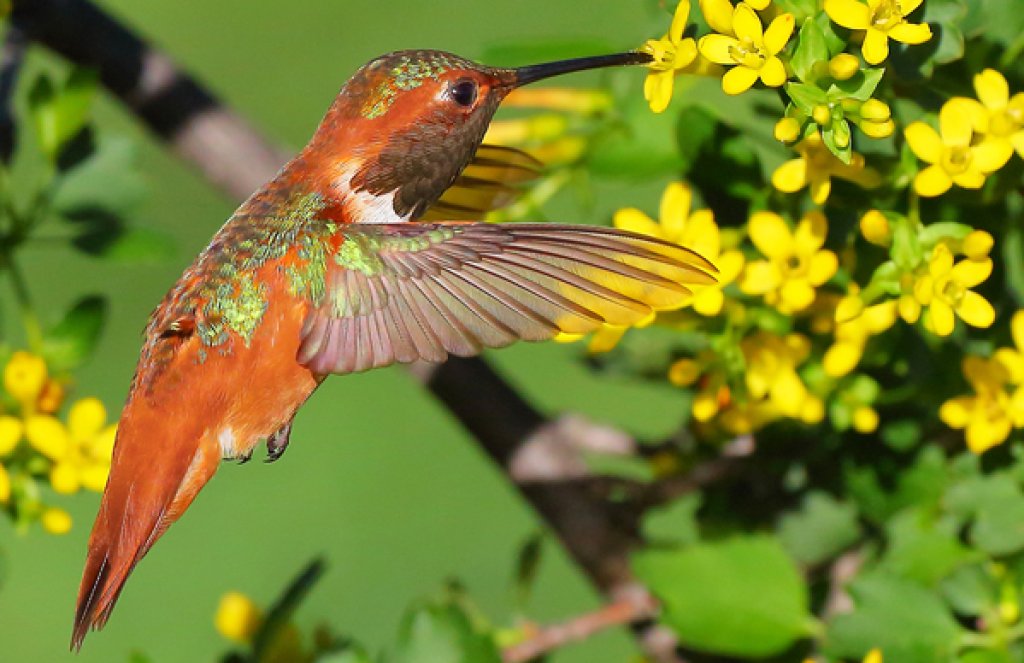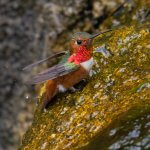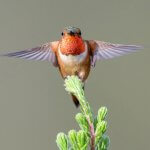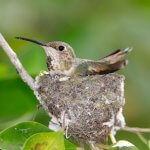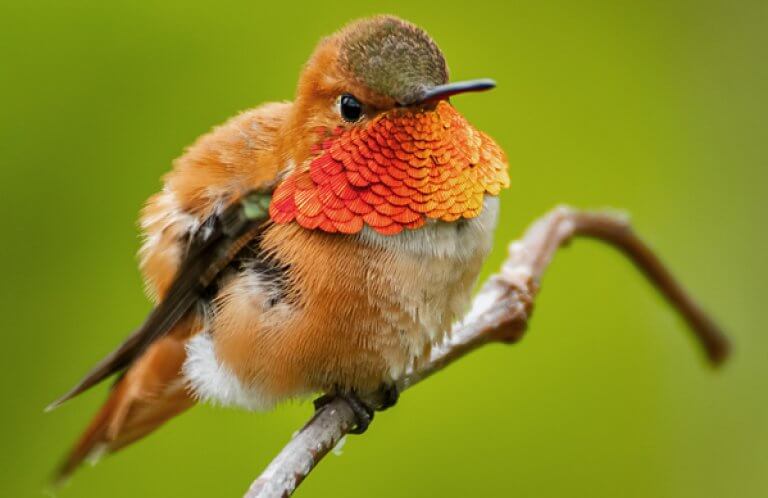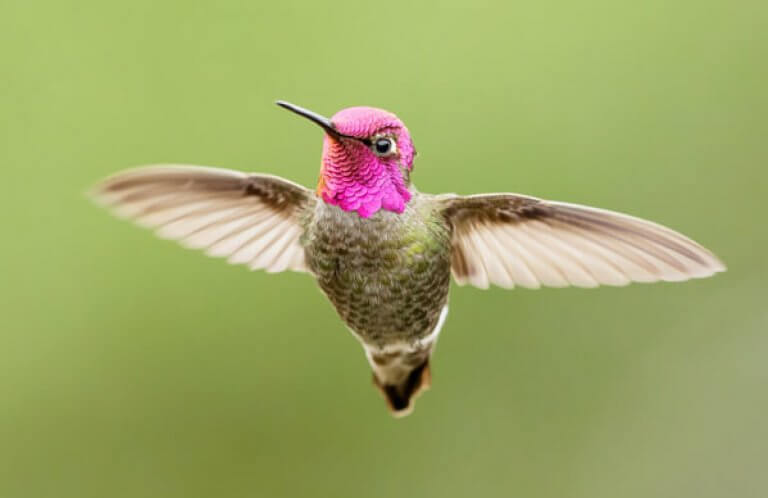About the Allen's Hummingbird
The Allen's Hummingbird has one of the most restricted ranges of any U.S. hummingbird, breeding solely along the West Coast from southern Oregon down to southern California; many winter in a small area of central Mexico.
This small hummingbird is very similar in appearance to the closely related, more widespread Rufous Hummingbird, and the two occasionally hybridize. While the adult male Rufous Hummingbird usually has an all-rufous back and neck, the male Allen's has a green back and neck. (Note that perhaps up to one in 20 adult male Rufous Hummingbirds also have green backs and are difficult to tell apart from Allen's.) Female and juvenile Allen's and Rufous Hummingbirds usually cannot be easily distinguished from one another in the field.
Migratory Timing
The migratory population of the Allen's Hummingbird follows an unusual schedule. Males wintering in Mexico begin to head back to their U.S. breeding grounds early in the year, arriving as early as January, more typically in February or March. Females arrive soon after, and their breeding season begins. Males may begin to head south again in late spring and early summer. These unusually early dates likely coincide with the winter rains and early-flowering shrubs that characterize the Allen's Hummingbird's coastal habitat. In contrast, the Rufous Hummingbird breeds farther north and arrives at nesting areas later: Although some show up as early as late February along the coast, most show up between April and early May, then depart late June to early July.
Songs and Sounds
Both male and female Allen's Hummingbirds give high-pitched "tick" calls while feeding, plus high-pitched chatters while interacting or defending territory.
Listen here:
During courtship displays, the male Allen's Hummingbird produces buzzy humming and a sharp, brief, metallic sound; these unique noises are made by air rushing through the wing and tail feathers.
Breeding and Feeding
During the breeding season, male Allen's Hummingbirds defend large territories, chasing off other hummingbirds and even much larger birds, such as American Kestrels and hawks.
Once a female enters his territory, the male begins his marvelous display. He starts with a back-and-forth "shuttle" flight in front of a female, followed by a high-speed, J-shaped dive from about 100 feet. This fancy flying is accompanied by a variety of twitters, calls, and strange noises (see Songs and Sounds, above).
Once a female Allen's Hummingbird mates, she leaves the male's territory and heads into a more sheltered area to nest. She gathers moss and other soft plant materials to build an inner nest cup, then binds it together with tough spider webs and camouflages the exterior with bark flakes, pine needles, and lichen. A female Allen's may build right on top of an older nest, or recycle materials from an old nest for a new one.
Once her nest is complete, the female lays two tiny eggs, which she incubates for nearly three weeks. After the naked, helpless chicks hatch, she shelters and feeds them until they fledge — usually in another three weeks. Like all other hummingbird species from the Anna's Hummingbird to the Marvelous Spatuletail, the female Allen's Hummingbird builds the nest and raises the pair's young without any help from the male.
Allen's Hummingbirds get most of their food by probing tubular, nectar-producing flowers. They also catch small insects, both in mid-air and by gleaning them from plants. This hummingbird is an important pollinator to many plants, including some federally endangered species such as the Western Lily.
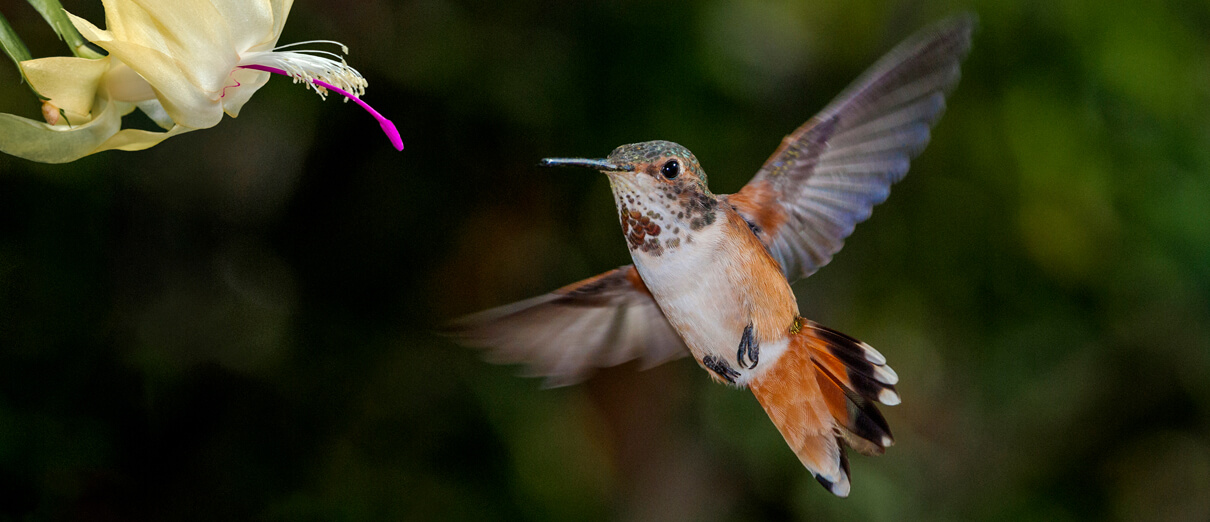
Region and Range
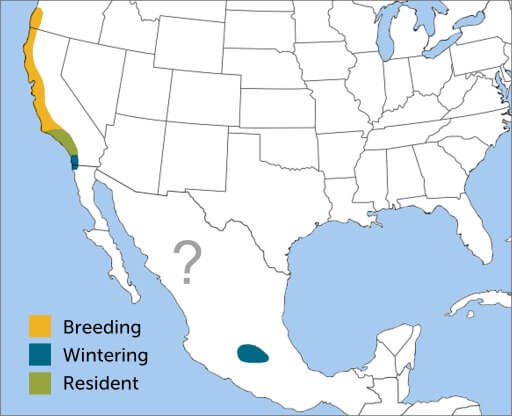
The Allen's Hummingbird is found in shrubby canyons and slopes, coastal chaparral, and open woodland and forest edges. Despite its limited range, two subspecies are recognized: one migratory and one resident. The migratory subspecies breeds along the West Coast and migrates south to central Mexico for the winter. Some percentage of this population may winter in Northern Mexico, but more data is needed to confirm this hypothesis. A few Allen's Hummingbirds have been recorded in recent years wintering in the southeastern United States.
The nonmigratory subspecies is found year-round from around Los Angeles south to the Mexican border, as well as on the Channel Islands.
Conservation
The biggest threat to the Allen's Hummingbird is habitat loss within its limited range. Partners in Flight considers it a species of concern, as its population decreased by 83 percent between 1970 and 2014.
However, this species (particularly the nonmigratory subspecies) has taken to human-altered habitats, readily feeding from introduced flowering trees, particularly eucalyptus, and other ornamental plants, and visiting backyard feeders — adjustments that have allowed it to expand its range.

Help support ABC's conservation mission!
In 2020, ABC and partners launched the California Central Coast Joint Venture (C3JV), an initiative to conserve bird habitat in this biologically important (and densely populated) region. The C3JV includes breeding habitat for the Allen's Hummingbird as well as many other birds of concern, including federally listed subspecies such as the Western Snowy Plover, Least Bell's Vireo, Southwestern Willow Flycatcher, and California Least Tern, as well as the Marbled Murrelet.
Get Involved
Policies enacted by the U.S. Congress and federal agencies, such as the U.S. Fish and Wildlife Service, have a huge impact on migratory birds. You can help shape these rules for the better by urging lawmakers to prioritize birds, bird habitat, and bird-friendly measures. To get started, visit ABC's Action Center.
Living a bird-friendly life can have an immediate impact on migratory birds in the United States. Doing so can be as easy as adding native plants to your garden, avoiding pesticides, and keeping cats indoors. To learn more, visit our Bird-Friendly Life page.
American Bird Conservancy and our Migratory Bird Joint Venture partners have improved conservation management on more than 8.5 million acres of U.S. bird habitat — an area larger than the state of Maryland — over the last ten years. That's not all: With the help of international partners, we've established a network of more than 100 areas of priority bird habitat across the Americas, helping to ensure that birds' needs are met during all stages of their lifecycles. These are monumental undertakings, requiring the support of many, and you can help by making a gift today.





































